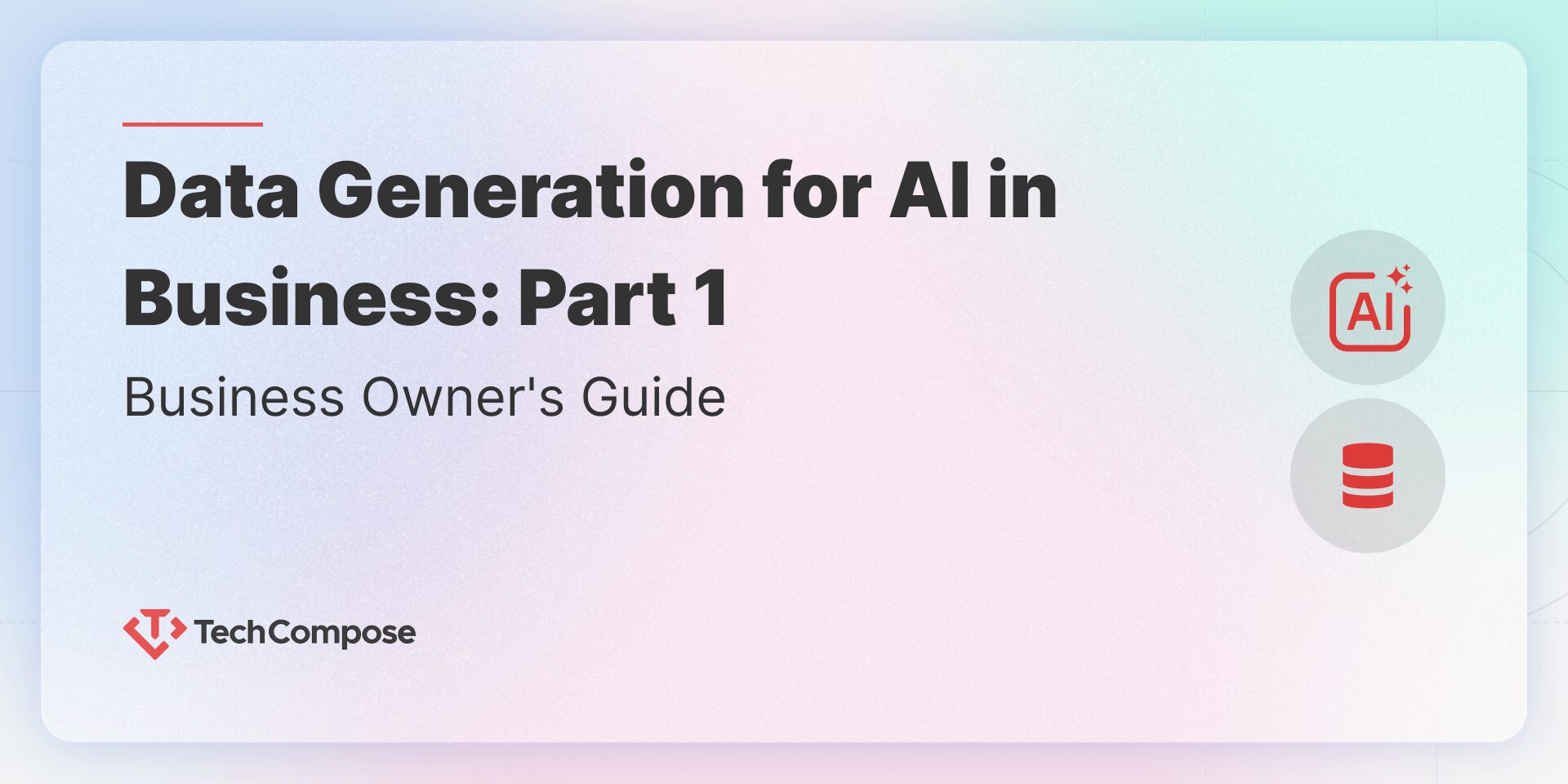
Why Data Generation Is Your AI Foundation
(And How to Get It Right)
Data isn’t just spreadsheets from your CRM. It’s the digital exhaust of your operations:
- Customer clicks on your app
- Sensor vibrations from factory equipment
- Call center transcripts
- Handwritten order forms
- Even competitor pricing trends
Your goal? Systematically generate, capture, and refine this raw material into AI-ready fuel.
The Business Shift You Need
Stop viewing data as an IT task. Start treating it like strategic inventory – one that directly determines:
✅ Can we automate this manual process?
✅ Will our AI spot defects humans miss?
✅ Can we predict churn before it happens?
In this guide, we’ll simplify how to:
- Choose the right data sources(without drowning in complexity)
- Transform raw inputs into AI-ready assets
- Avoid costly pitfalls that derail 60% of AI projects
Whether you’re a startup or enterprise, nailing this first step turns AI from a buzzword into your unfair advantage.
Here’s a business-friendly overview of data generation strategies – designed for non-technical owners to evaluate foundational data needs for AI
Data Generation Strategies: Business Owner’s Guide
(Preparing Your Data Foundation for AI)
- Strategy: Track Digital Footprints
- What it is: Automatically records customer/operational actions in apps, websites, or tools.
- Business ID: “Your Automatic Data Tracker”
- Evaluation:
- ✅ Pros: Low-cost, real-time insights (e.g., “Which features do users ignore?”).
- ❌ Cons: Misses offline interactions.
- 💡 Fit: Essential for e-commerce, SaaS.
- ⏱️ ROI Timeline: 1–3 months
- Strategy: Smart Hardware Sensors
- What it is: Physical devices (machines, vehicles, shelves) that stream performance data.
- Business ID: “Your Equipment’s Health Monitor”
- Evaluation:
- ✅ Pros: Predicts failures (e.g., “Factory machine overheating alerts”).
- ❌ Cons: High setup costs; IT skills needed.
- 💡 Fit: Manufacturing, logistics, energy.
- ⏱️ ROI Timeline: 6–12 months
- Strategy: Human-Labeled Data
- What it is: Staff or contractors tag raw data (e.g., photos, reviews) to “teach” AI.
- Business ID: “Data Training Camp”
- Evaluation:
- ✅ Pros: High accuracy (e.g., “Tagging defective products in images”).
- ❌ Cons: Slow, expensive for large volumes.
- 💡 Fit: Quality control, customer sentiment analysis.
- ⏱️ ROI Timeline: 3–6 months
- Strategy: AI-Generated Simulated Data
- What it is: Create artificial (but realistic) data when real data is scarce or sensitive.
- Business ID: “Synthetic Data Twin”
- Evaluation:
- ✅ Pros: Bypasses privacy laws; tests edge cases.
- ❌ Cons: May not reflect real-world chaos.
- 💡 Fit: Healthcare, finance, R&D.
- ⏱️ ROI Timeline: 1–4 months
- Strategy: Third-Party Data Partnerships
- What it is: Buy/license external data (market trends, demographics, weather).
- Business ID: “External Insights Boost”
- Evaluation:
- ✅ Pros: Fast market context (e.g., “How competitors’ pricing affects sales”).
- ❌ Cons: Quality varies; contract risks.
- 💡 Fit: Sales forecasting, expansion planning.
- ⏱️ ROI Timeline: 1–2 months
- Strategy: Direct Customer Feedback
- What it is: Ask users for input via surveys, ratings, or corrections.
- Business ID: “Customer Truth Hotline”
- Evaluation:
- ✅ Pros: Builds trust; fixes AI mistakes fast.
- ❌ Cons: Biased if few users respond.
- 💡 Fit: Product improvement, chatbots.
- ⏱️ ROI Timeline: Immediate
- Strategy: Digitize Paper/Manual Processes
- What it is: Convert physical records (forms, notes) into digital data.
- Business ID: “Paper-to-Digital Converter”
- Evaluation:
- ✅ Pros: Unlocks “hidden” data (e.g., “Scanning handwritten orders”).
- ❌ Cons: Error-prone without validation.
- 💡 Fit: Healthcare, field services, legal.
- ⏱️ ROI Timeline: 2–5 months
How to Decide: Business Owner’s Checklist
(For YOUR Data Needs)
Ask these questions to pick the right strategy:
- “What AI problem am I solving?”
- Example: “Predict inventory demand” → Use Smart Sensors+ Third-Party Data.
- “How soon do I need results?”
- Less than 3 months? Prioritize Digital Footprints or Customer Feedback.
- “What’s my budget tolerance?”
- Tight budget? Avoid Sensors / Human Labeling; try Synthetic Data.
- “Do I have sensitive data (health/finance)?”
- Yes? Synthetic Data or Digitized Records (with encryption).
Golden Rule 🔑
“Start with ONE high-impact strategy aligned with your biggest pain point.”
- Struggling with customer churn? → Launch Customer Feedback + Digital Footprints.
- Facing equipment downtime? → Deploy Smart Sensors first.
Red Flags to Watch 
- “We’ll just buy data!” → Third-party data decays quickly without internal validation.
- “Let’s record everything!” → Focus only on data tied to key goals (e.g., revenue, safety).
- “AI can fix messy data later.” → Garbage in = Garbage out. Clean data comes first.
⚠️ But how to plan and implement? Part 2 Solves It!
Struggling with implementation? In Part 2: CTO’s Decision Framework, I have explored various techniques for data generation based on the business, as well as a phase-by-phase process towards implementation.